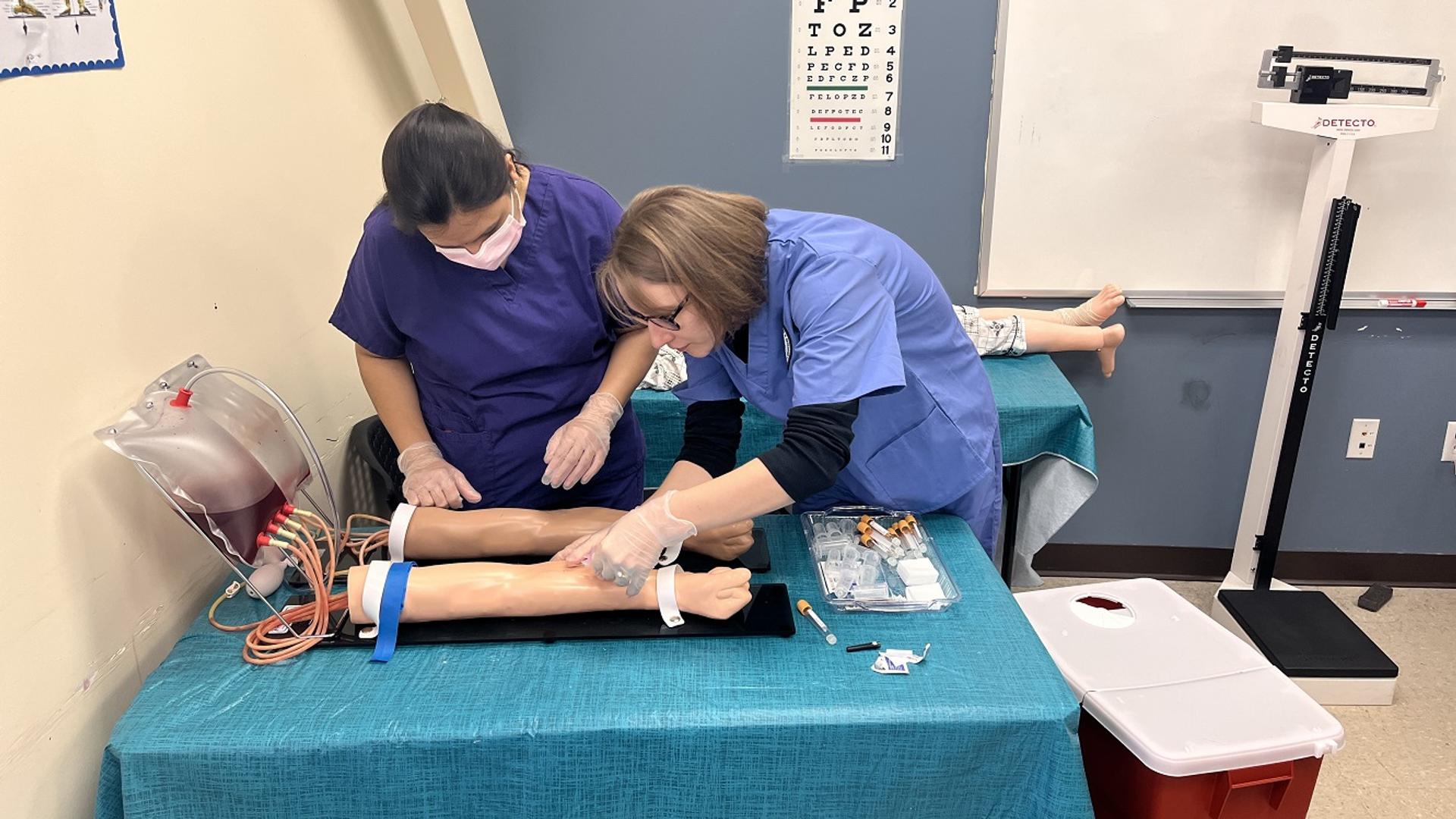All About Northeast Medical Institute - New Haven Campus Phlebotomy Course & Cna Class
All About Northeast Medical Institute - New Haven Campus Phlebotomy Course & Cna Class
Blog Article
The Ultimate Guide To Northeast Medical Institute - New Haven Campus Phlebotomy Course & Cna Class
Table of ContentsThe 9-Second Trick For Northeast Medical Institute - New Haven Campus Phlebotomy Course & Cna ClassNot known Details About Northeast Medical Institute - New Haven Campus Phlebotomy Course & Cna Class What Does Northeast Medical Institute - New Haven Campus Phlebotomy Course & Cna Class Do?Northeast Medical Institute - New Haven Campus Phlebotomy Course & Cna Class - TruthsWhat Does Northeast Medical Institute - New Haven Campus Phlebotomy Course & Cna Class Mean?The Ultimate Guide To Northeast Medical Institute - New Haven Campus Phlebotomy Course & Cna Class
The use of such tools must be come with by various other infection prevention and control practices, and training in their use. Not all safety and security tools apply to phlebotomy. Prior to choosing a safety-engineered tool, customers need to completely investigate readily available tools to identify their suitable usage, compatibility with existing phlebotomy practices, and effectiveness in protecting team and individuals (12, 33).For settings with reduced resources, expense is a motoring variable in purchase of safety-engineered devices. Where safety-engineered tools are not offered, experienced use of a needle and syringe is acceptable.
One of the essential pens of top quality of treatment in phlebotomy is the involvement and teamwork of the client; this is mutually valuable to both the wellness employee and the client. Clear details either written or spoken ought to be offered to every person who goes through phlebotomy. Annex F supplies example message for describing the blood-sampling treatment to an individual. In the blood-sampling room for an outpatient department or center, provide a comfy reclining sofa with an arm remainder.
The Main Principles Of Northeast Medical Institute - New Haven Campus Phlebotomy Course & Cna Class
Ensure that the indications for blood sampling are clearly specified, either in a written method or in documented directions (e.g. in a research laboratory kind). In any way times, follow the techniques for infection prevention and control listed in Table 2.2. Infection avoidance and control techniques. Accumulate all the equipment required for the treatment and place it within secure and simple reach on a tray or trolley, ensuring that all the products are plainly noticeable.
Where the person is adult and conscious, follow the actions laid out listed below. Present yourself to the person, and ask the client to state their full name. Check that the research laboratory kind matches the patient's identity (i.e. match the patient's information with the laboratory type, to ensure accurate identification). Ask whether the license has allergies, anxieties or has actually ever collapsed during previous injections or blood attracts.
Make the client comfy in a supine setting (if possible). The individual has a right to reject a test at any type of time prior to the blood tasting, so it is important to make certain that the client has understood the treatment - PCT Courses.
Northeast Medical Institute - New Haven Campus Phlebotomy Course & Cna Class Things To Know Before You Get This
Extend the individual's arm and evaluate the antecubital fossa or forearm. Locate a blood vessel of a great dimension that is visible, straight and clear. The representation in Section 2.3, shows common placements of the vessels, however lots of variations are feasible. The mean cubital capillary exists between muscles and is normally the most simple to puncture.
DO NOT put the needle where capillaries are diverting, since this boosts the chance of a haematoma. Locating the blood vessel will certainly help in identifying the correct size of needle.
Haemolysis, contamination and existence of intravenous liquid and medicine can all alter the results (39. Nursing team and doctors might access central venous lines for samplings adhering to protocols. Samplings from central lines carry a threat of contamination or wrong research laboratory test outcomes. It serves, however not optimal, to injure samplings when very first presenting an in-dwelling venous gadget, prior to connecting the cannula to the intravenous fluids.
Getting The Northeast Medical Institute - New Haven Campus Phlebotomy Course & Cna Class To Work
Failure to allow enough call time enhances the risk of contamination. DO NOT touch the cleaned site; in certain, DO NOT place a finger over the capillary to direct the shaft of the Discover More Here revealed needle.
Ask the individual to develop a clenched fist so the blood vessels are much more famous. Get in the vein quickly at a 30 degree angle or less, and proceed to introduce the needle along the blood vessel at the easiest angle of entrance - CNA Training. When adequate blood has actually been collected, launch the tourniquet prior to taking out the needle
Not known Incorrect Statements About Northeast Medical Institute - New Haven Campus Phlebotomy Course & Cna Class
Withdraw the needle delicately and use mild pressure to the site with a tidy gauze or completely dry cotton-wool ball. Ask the individual to hold the gauze or cotton wool in position, with the arm prolonged and raised. Ask the person NOT to bend the arm, since doing so creates a haematoma.

4 Simple Techniques For Northeast Medical Institute - New Haven Campus Phlebotomy Course & Cna Class
Do not push the syringe bettor because additional pressure increases the threat of haemolysis. Where possible, keep the tubes in a rack and move the shelf in the direction of you. Inject downwards into the proper coloured stopper. DO NOT eliminate the stopper due to the fact that it will certainly release the vacuum. If the sample tube does not have a rubber stopper, inject exceptionally slowly into the tube as lessening the stress and speed made use of to move the specimen minimizes the danger of haemolysis.

Report this page